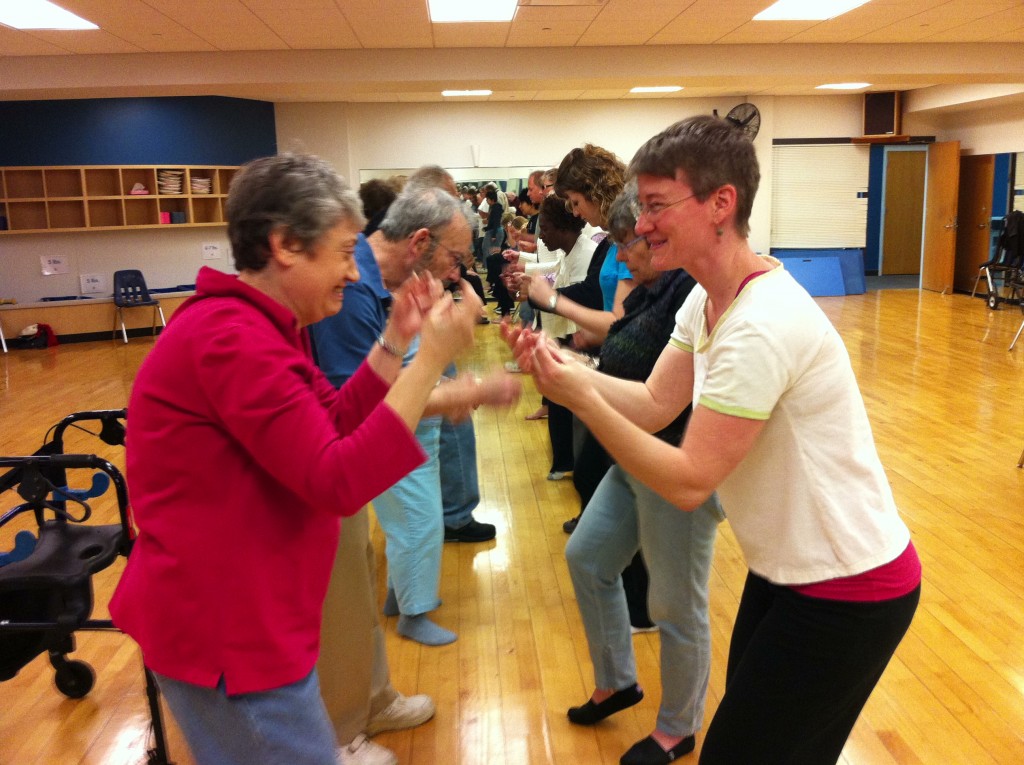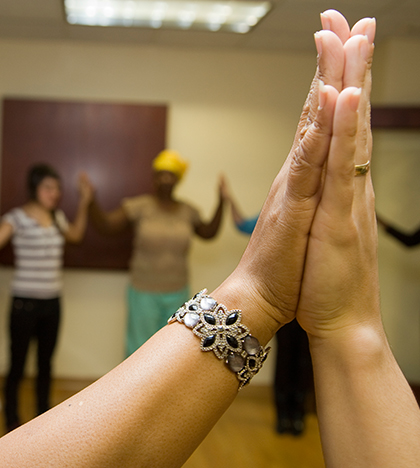Teaching Dance: Community Outreach and Making Social Change

By Susan Epstein of Dance Pathways
These are not new concepts. Actually a few pioneers have been applying these aesthesis and artistic qualities of dance to teach and inspire special communities for more than a decade. What is really wonderful is that many of them have codified their techniques and are teaching their methodologies so that dancers and dance teachers can apply and continue this rewarding work.
The concept is not Dance Therapy, which is another but different and equally effective approach to using dance to heal. The programs I am talking about view the students as dancers; not patients, disabled, or victims. They embrace using dance to create community, mutual respect, inclusiveness and inspire creativity while helping with a myriad of issues such as balance and flexibility. It can help people express emotions, relieve stress and mitigate isolation while also helping with cognitive impairments. But most of all dance can lift the spirit and magically transform the dancers and teachers.

It takes a special understanding to successfully teach in this way, but it doesn’t take years of study to get the training you need. There are several resources for dancers and dance teachers; here are 3 programs that are very special:
- Dance for PD® (Parkinson’s) is a notable choice. Founded by David Leventhal, from the Mark Morris Dance Group, Dance for PD® offers dance classes for people with Parkinson’s disease in Brooklyn, New York and, through a network of partners and associates, in more than 100 other communities in 11 countries around the world. In Dance for PD® classes, participants are empowered to explore movement and music in ways that are refreshing, enjoyable, stimulating and creative. Dance for PD offers teacher workshops several times a year. http://danceforparkinsons.org/training-workshops
- The Institute for Community Action Training (ICAT) teaches the Gibney Dance Community Action methodology to help dance teachers to mobilize the arts as a vehicle for social change. Originally designed to work with victims of domestic violence, the methodology can be applied to many communities. Participants will receive in-depth knowledge of their program model: http://www.gibneydance.org/community-action/#training
A working understanding of domestic violence and other prevalent social issues
Techniques to effectively engage target populations
Tangible workshop aids and resources
Tips/tools for creating successful partnerships
Necessary skills for starting/expanding your own outreach program
- The National Dance Institute uses dance as a catalyst to engage children and motivate them towards excellence. Programs are offered to all children, transcending barriers of language, culture, and physical and cognitive challenges. Children learn to work together and develop personal standards of excellence, a pride of achievement, and a curiosity about the world that supports their success in school and in life. The Teaching Artist Training program disseminates NDI’s teaching methodology to educators and artists around the world. http://www.nationaldance.org/programs_teacher.htm
I am certain there are others who have developed methods and training similar to these. Look around and find one that touches your soul and sparks your passion.
Dance has an amazing power to inspire, create community, and heal. Everyone loves to dance, everyone loves music. It’s a wonderful way to use your talents to make a difference.




One thought on “Teaching Dance: Community Outreach and Making Social Change”
Comments are closed.